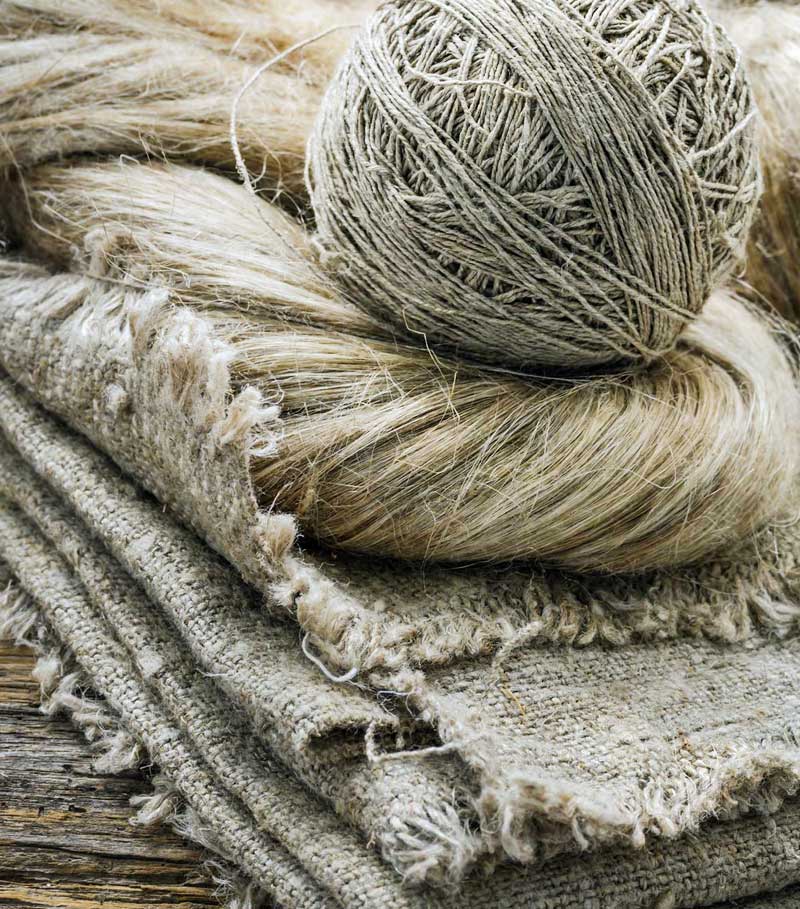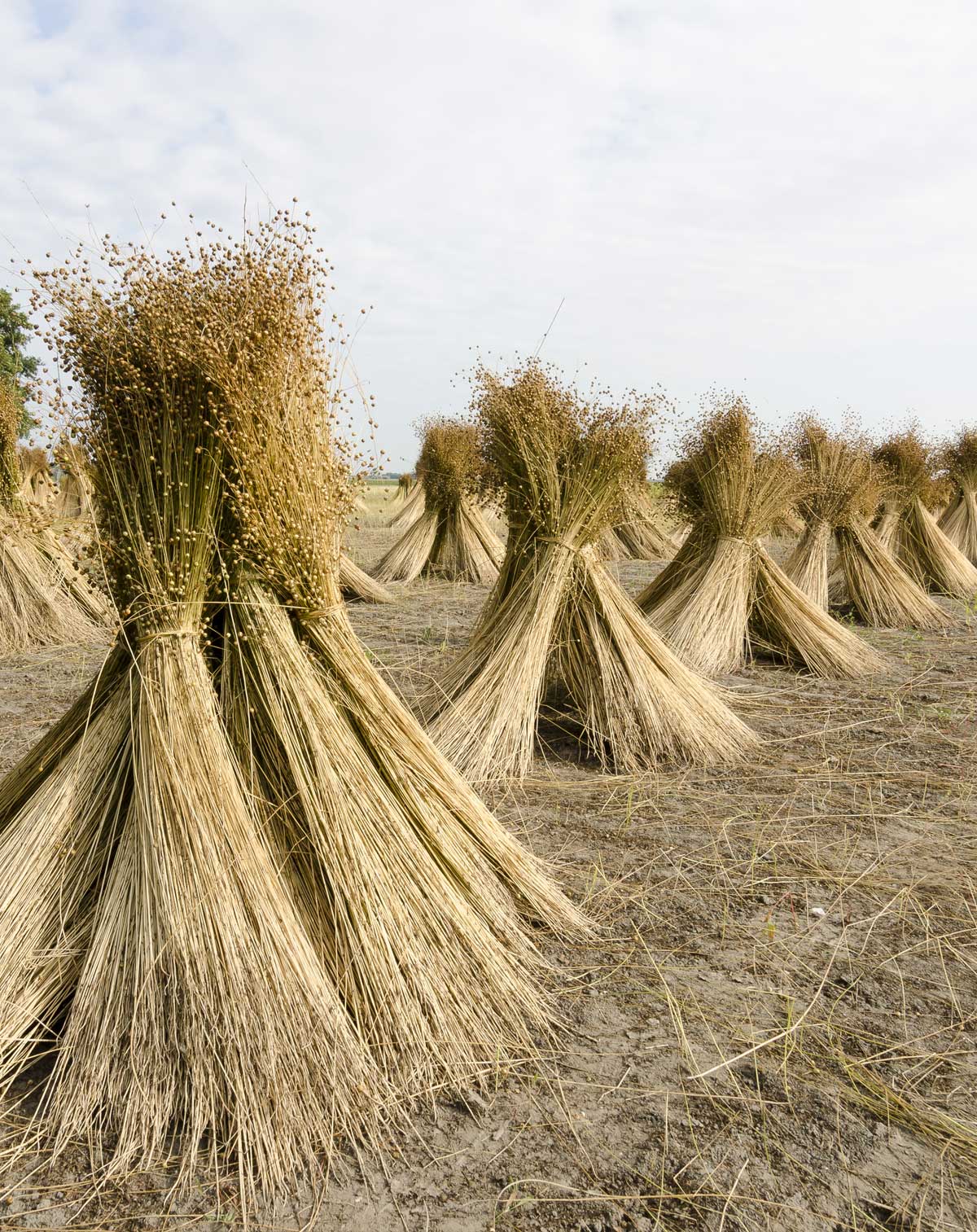Wellness Design: 5 Reasons To Switch To Linen For A Healthy Home

Did you know that linen is one of the oldest forms of textiles?
The History Of Linen
Linen dates back over 30,000 years. The name “linen” comes from the Latin name for the flax plant, Linum, which is the source of the fiber from which linen is woven.
The earliest linen remnants were found in a cave in Southeastern Europe. From there, it’s use has been noted in many ancient civilizations. In Mesopatamia, it was cultivated and produced for the wealthy class. In Ancient Egypt it was a symbol of purity and wealth, and was used in ceremonial and burial garments. Tutankhamen’s tomb was shrouded in linen curtains. It is even referenced throughout the Bible.
By the Middle Ages, the linen and flax trades moved into the Western world. Germany became a major producer, followed by England and Ireland, where it was used for clothing and produced in home mills.
Linen’s popularity and use grew and continued. The Industrial Revolution moved production from the home to the industrialized mill in England and Germany. Flax cultivation and linen weaving found their way to the New World, where linen became the most commonly used fabric for Colonial American homes. This growth continued for the next few centuries… and then something happened.
Within the last century our homemaking changed. We embraced alternatives to traditional modalities in an effort to lessen our workload. Fast foods got dinner on the table in an instant. Plastic and styrofoam made everything portable, storable, and disposable. And wrinkle-free synthetic fabrics reduced the need for ironing. We ran headfirst in this direction for decades. But recently there has been another shift. A slowing down.
What I have noticed over the past decade in my work for Anichini, a textile company which specializes in luxury artisanal home furnishings, is that linen has seen a revival. Once again, people are appreciating the nature of this fabric and all that it has to offer. Read on for what those benefits are.
5 Reasons To Switch To Linen For A Healthy Home

#1: Linen Is A Natural Fiber
Linen comes from the flax plant, Linum usitatissimum. An annual, it is cultivated in fields where it grows to about 3 feet tall and produces a beautiful clear blue flower.

Once passed, the flowers become a round seed head which holds the flaxseed. Flaxseed is also a source for food and to produce linseed oil. (Note: it is also an integral part in some low carb, Keto bread recipes.) At this point the flax is hand harvested. The fibers from the stem are what is made into yarn to weave linen.
For me, it is important to surround myself with natural things. Our skin is our largest organ, and just as we watch what we put into our bodies, we should watch what we surround them with. We absorb what we put our bodies in contact with. Our bed and bath linens are especially important. Using a natural fiber for these, one that is actually good for us to eat, is a superior choice for our health.

#2: It Is A More Eco-friendly Fiber
For starters, flax is a strong plant which grows naturally in fields without the need for additional water, pesticides, and fertilizers. It actually can improve soils and has a high rate of carbon absorption.
In addition to being agriculturally more eco-friendly, linen is more eco-friendly around the home. It dries much faster than it’s cotton counterparts and so uses less energy to launder and dry. (Though air drying is perhaps the best way to care for it.)
#3: Linen Is Better For Your Skin And Body
In addition to the benefits of being a natural, healthy fiber to surround yourself with (as mentioned above)… it has the added benefit of being naturally exfoliating and rejuvenating for your skin. I have always said that my patchwork waffle towels (pictured in the first image) are like dry brushing, without the brush.
As noted above, linen dries quickly. It keeps you cool when you are warm and also warm when you are cold.
#4: It Is A Cleaner Fabric
You know that smell that can happen from dirty wet towels? It doesn’t happen with linen. Linen is naturally antimicrobial. It also dries much faster than cotton, making it an excellent, cleaner choice for the bath.
#5: Linen Has A Slower, Organic Style
This reason is purely aesthetic, but our surroundings and what we view everyday play such a big part in our overall health. Have you ever noticed the difference in your demeanor when your house is clean and straight than when it is out of control?
In the same way, I think that natural, organic fibers and textures contribute to a softening and slowing down. They can invite calm, not only because of their visual ease, but the energy which they exude.
Do you use linen in the home? Do you have any questions on it? Let me know below! Are you new to A Cultivated Living? If so, meet me here and be sure to say hello!



Leave a Reply